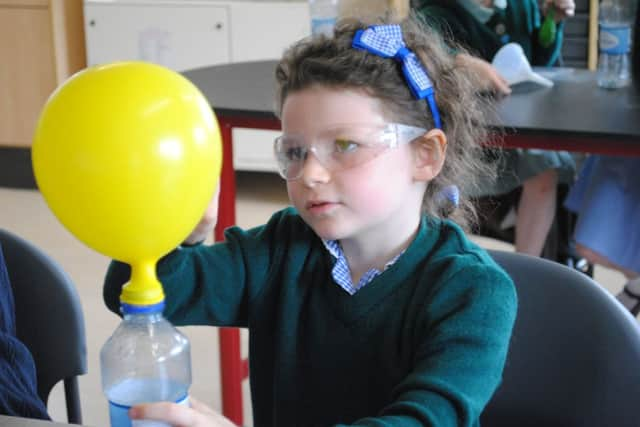No logic in seeing science as a boys’ game


When we think about role models for children, we very often picture those at the very pinnacle of their careers – the brilliant minds who will shape the future of our world. At Kilgraston, we want to give each and every one of our girls the opportunity and the inspiration to become leaders in their field, and to aspire to the highest echelons of academic and professional success. To that end, we regularly host inspiring speakers from a range of fields, and are careful to ensure that our girls are surrounded by role models who inspire them to excel.
Exciting though these showcase visitors are, it’s the example set by a more everyday type of role model that I’ve been dwelling on recently. Over my 14 years as a teacher of science, I’ve regularly asked classes of 11 and 12-year-olds to draw a picture of “a scientist”.
Advertisement
Hide AdAdvertisement
Hide AdAnd I’ve been delighted to see that, over the years, those children’s drawings have looked less and less like a nutty professor (he of advancing years, electrifying hair and elbow patches), and a lot more like – well – like my colleagues and me.
As a scientist and a teacher, it’s vital that pupils can relate to me. In a society where we hear again and again that children – and girls in particular – are being put off science, it’s absolutely vital that girls understand science as something that is relevant and accessible to absolutely everyone. Far from being the preserve of academics and researchers, it’s vital to my colleagues and me that we teach science as the absolute cornerstone of progress and development, and as the potential solution to the major issues facing the world today. That means moving away from the more traditional view of pure theory and desk-based learning of science, and an increasing focus on active learning, where the girls are expected to take responsibility for the careful acquisition and application of scientific knowledge from an early age.
Developing links across the curriculum helps our girls to appreciate real-world, and real-career applications of their scientific study. That might mean working with the home economics department to study nutrition and product development, linking with the art department to develop a marketing campaign for a medical innovation we’ve researched, or using geography as our tool for understanding the ecosystems we’re studying. We also aim for our girls to see science “in action”. Studying the theory of techniques used in blood transfusion is one thing, but seeing that technique used in hospitals to transform the lives of real people is quite another. Likewise, telling the girls about careers in Stem subjects (science, technology, engineering and maths) is easy, but when our alumni come in to share the stories of their own work in marine salvage, that message is all the more convincing.
My greatest frustration, as a teacher, is supporting children who’ve been told that they can’t do something, especially when that something is a core principal such as science or maths.
It’s vital that we engage children in science and maths from a very early age, give them confidence in their abilities, and encourage a passion and curiosity for the subject. It’s not unusual to see our six-year-old girls decked out in safety goggles, sitting on high stools at the laboratory tables, immersed in making soap or discovering what happens when we add bicarbonate of soda to vinegar. Children have a natural curiosity to explore the world around them, and science can be a very effective tool for channelling that inquisitiveness
Here at Kilgraston, girls love to get out to explore our grounds, and we’re lucky that activities such as pond dipping, ecological sampling techniques, growing our own vegetables and even incubating eggs can all be carried out here on site. In the classroom, we make edible cells, construct charm bracelets to demonstrate the process of protein synthesis, and use our iPads to create adverts for the products we create.
It was an honour to welcome Professor Lesley Yellowlees, president of the Royal Society of Chemistry, to our school to formally open our new science centre this term, and for our girls to appreciate the breadth of opportunities associated with a science-based career.
At the same time, the everyday examples we set – as parents, teachers and role models – are vital in inspiring girls with the mantra that “science really is for everyone”.
• Amanda O’Hear is head of teaching and learning, and head of biology, at Kilgraston School www.kilgraston.com
SEE ALSO